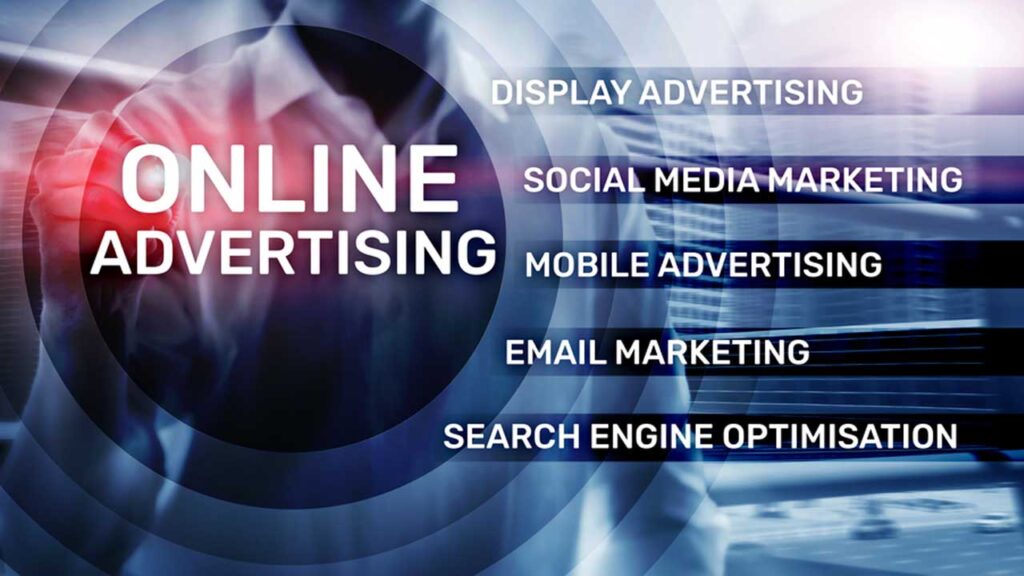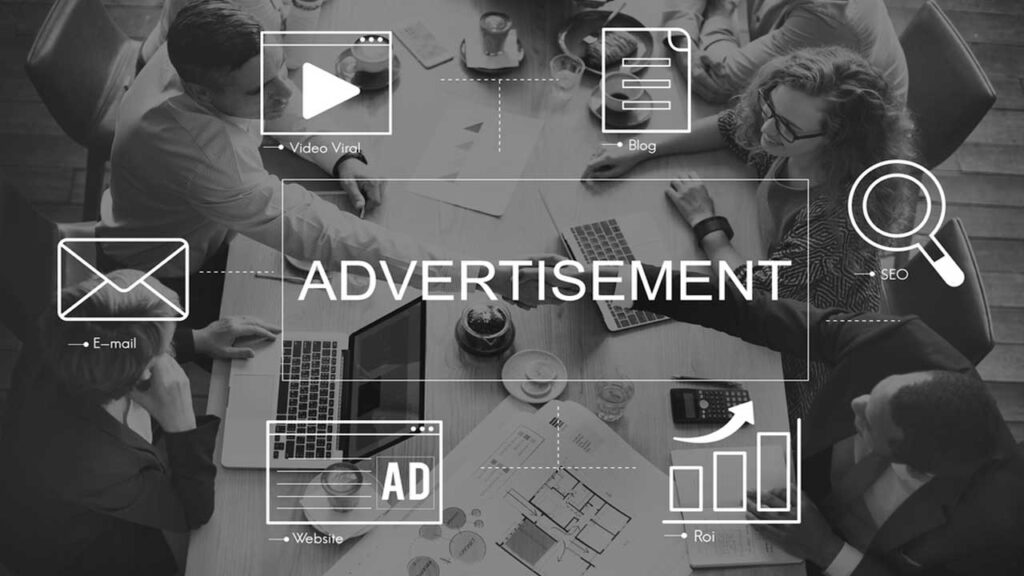Maximizing Impact: The Top Strategies for Smart Paid Advertising Strategy
Brett Lewis
Paid Ads - May 13, 2024

To excel in paid advertising involves more than just spending money; it’s about smart investment and precise targeting. This article unveils how to utilize paid advertising for measurable business growth in 2024, exploring advanced strategies, platform nuances, and optimization techniques to elevate your ad campaigns.
Key Takeaways
- Paid advertising is a multi-faceted strategy that focuses on reaching a target audience efficiently using various formats across multiple platforms, relying on precise targeting and robust measurement tools to gauge ROI and drive sales.
- The evolution of paid advertising has brought forth sophisticated tools and innovative targeting techniques, enabling businesses to connect with the right audience, leading to higher engagement and effective campaigns.
- Advanced tactics such as retargeting, lookalike audiences, and contextual advertising, coupled with continuous measurement and optimization, are pivotal for enhancing the impact of paid campaigns and achieving a compelling return on ad spend.
Understanding the Basics of Paid Advertising

Paid advertising, also known as paid advertisements, is a powerful tool that enables businesses to gain visibility quickly by appearing at the top of search results and social media feeds. It offers various ad formats, including:
- Paid search advertising on platforms like Google Ads and social media advertising
- Display ads that can appear on numerous websites
- Native ads that blend with a site’s content
Creating a successful paid advertising campaign is a multi-step process. It includes:
- Defining the target audience
- Developing creative content
- Setting up tracking
- Iterating based on performance data
This comprehensive approach ensures that the ad campaign is tailored to resonate with the intended audience, driving higher engagement and conversions.
The key benefits of paid advertising span across various aspects of digital marketing. It allows businesses to reach a large audience quickly, utilize precise targeting options, and access robust measurement tools to assess the return on investment. These benefits make paid advertising an indispensable part of any comprehensive digital marketing strategy.
With the ability to boost brand visibility, stimulate website traffic, and ultimately propel sales, paid advertising presents a special opportunity for businesses. Harnessing various ad formats and platforms can lead to impactful campaigns that connect with the target audience and bring about tangible outcomes.
The Evolution of Paid Advertising
Digital marketing has come a long way since its inception in the 1990s, with the introduction of the first clickable banner ad in 1993 marking a significant milestone. However, the real game-changer was the launch of Yahoo in 1994, which led businesses to focus on optimizing their websites to rank higher in search engine results.
The digital advertising realm underwent a vast expansion with Google’s rise in 1998 and the birth of platforms like LinkedIn, Myspace, and Facebook in the early 2000s. These platforms didn’t just open new avenues for businesses to connect with their target audience, they revolutionized the approach to digital marketing.
The 2000s witnessed several key innovations in digital marketing, including the use of cookies for tailored advertising strategies and the launch of Google AdWords. These advancements considerably advanced digital marketing capabilities, enabling businesses to reach their target audience more effectively and drive higher conversions.
Today, paid advertising has evolved into a sophisticated tool that allows businesses to reach their target audience, drive website traffic, and increase sales. With the advent of innovative targeting techniques and the emergence of new advertising platforms, paid advertising continues to evolve, shaping the future of digital marketing.
The Power of Targeting: Reaching Your Ideal Audience

Audience targeting is a critical component of any successful paid advertising campaign. It involves segmenting consumers based on demographics or behaviors, creating a foundation for personalized marketing. By understanding their audience’s preferences and behaviors, businesses can create tailored marketing messages that resonate with their audience, leading to higher engagement and sales.
Recognizing the perfect audience is pivotal in shaping a successful paid advertising campaign. This process involves:
- Data collection
- Understanding purchase behaviors
- Demographic analysis
- Buyer persona creation
- Defining precise ad targeting preferences
Such a thorough approach ensures the campaign connects with the audience, fostering higher engagement and conversions.
Advertisers use various targeting options to reach their target audience. These include:
- Remarketing: to reach people who have previously interacted with their brand
- In-Market targeting: to capture users actively researching products
- Life Events targeting: to connect with users at significant life moments
By effectively utilizing these targeting options, advertisers can increase the effectiveness of their ad campaigns and drive better results.
Targeting is not only a critical practice in maximizing return on investment in paid advertising, but it also leads to the generation of high-quality leads and increased web traffic by focusing on consumers most interested in the products or services offered. This underscores the power of targeting in paid advertising and its role in driving successful ad campaigns.
Choosing the Right Platform for Your Paid Ads

Choosing the right platform for your paid ads is a critical decision that can significantly impact the success of your ad campaigns. Google and Meta’s ad platforms dominate digital ad spending, providing a comprehensive range of advertising products and measurement tools. These platforms offer businesses a wide array of options to reach their target audience and drive measurable results.
There are various ad platforms available, each offering unique targeting options and types of ads to cater to specific business needs. For instance, Google Ads offers targeting by age, gender, location, device types, and search keywords, ensuring ads reach the intended audience. On the other hand, social media platforms enable detailed audience targeting based on demographics, job status, interests, and purchase behaviors, making social media ads highly effective. Additionally, YouTube ads provide businesses with the opportunity to reach users through engaging video content on one of the most popular social media platforms.
Google’s Display Network offers placement targeting, giving advertisers the liberty to select specific websites for their advertisements. This feature grants businesses extra control over their ad placements, enhancing their ability to effectively engage their target audience.
Emerging venues for paid advertising, such as ad-supported streaming, offer businesses new opportunities to reach their target audience. For instance, Amazon Prime’s new ad tier and the expected addition of Apple TV+ represent emerging venues for paid advertising.
When selecting an advertising platform, it’s important to consider the online communities each platform caters to, the competition present, and the effort required to succeed. Starting with a single channel and gradually expanding to others as appropriate can ensure an effective ad channel strategy.
Crafting Compelling Ad Copy and Creatives
Developing engaging ad copy and creatives is a crucial piece of the puzzle in creating successful ad campaigns. Some key elements to consider are:
- Headlines that leave a lasting first impression
- Ad copy that embodies a conversational tone and human element
- Personal connections and catering to audience preferences beyond mere product features
- Integrating the AIDA framework and humor when fitting
By incorporating these elements, you can create ad copy that captures attention and drives results.
Ad copy should aim for:
- Conciseness with a strong value proposition
- Brevity to convey expertise and build trust
- Striking visuals, video ads, and creative imagery to connect with the target audience
Campaigns like Huel Vegan Protein, BetterHelp, and Anorak Life Insurance have successfully used these strategies to drive traffic and conversions.
To achieve the end goal of user conversion, ad copy must incorporate a clear call to action that guides the audience towards the desired action on the landing page. Whether it’s clicking on a link, signing up for a newsletter, or making a purchase, a clear call to action can significantly increase the effectiveness of your ad campaigns.
Creating compelling ad copy and creatives is an art that requires a deep understanding of your target audience, a clear value proposition, and a compelling call to action. By effectively utilizing these elements, businesses can create effective ad campaigns that drive measurable results.
Budgeting and Bidding Strategies for Success
Setting a budget for your paid advertising strategy is an essential move towards ensuring the success of your ad campaigns. Allocating 7% of the total revenue to the ad spend and distributing the budget according to specific goals is recommended. This approach guarantees judicious resource utilization and the achievement of optimal outcomes.
There are several methods for determining an advertising budget. The chosen approach may depend on the specific needs and goals of the business. It can either be set based on a fixed budget or based on goals and desired ROI. Setting the budget early in the campaign planning process ensures wise use of resources and optimal outcomes.
Bidding for ad placements on various platforms is another crucial part of a successful paid advertising strategy. Advertisers can bid for ad placements based on actions such as clicks, impressions, or conversions. The bidding strategy should align with marketing goals, such as optimizing for conversions in conversion-focused campaigns or bidding for more views in brand awareness campaigns.
To effectively scale paid advertising, it’s beneficial to allocate more budget to tactics that are proven to work. Monitoring effectiveness through metrics like conversion rates can help optimize the ROI of paid advertising campaigns. This approach ensures that your budgeting and bidding strategies align with your marketing goals and drive better results.
Measuring and Optimizing Your Paid Advertising Campaigns
Assessing and refining your paid advertising campaigns is an essential part of ensuring your marketing efforts’ success. Important performance metrics to consider include:
- Return on investment (ROI)
- Click-through rate (CTR)
- Cost per lead (CPL)
- Conversion rate
- Audience engagement metrics
These metrics offer invaluable insights into your ad campaigns’ effectiveness, guiding your optimization endeavors.
Tracking tools like Google Analytics and Ruler Analytics offer insights into ad performance by:
- Campaign
- Medium
- Content
- Interactions with the website
These tools can help you understand how your audience interacts with your ads, enabling you to make data-driven decisions and optimize your ad campaigns.
Monitoring and optimizing ad campaigns require:
- Regular review of campaign results
- A/B testing
- Adjusting strategies based on insights
- Utilizing techniques such as robust conversion tracking
- Weekly or monthly performance check-ins
This approach ensures that your ad campaigns are continuously improved and optimized for better results.
Continuous campaign improvement is achieved by analyzing data-driven decisions, measuring campaign financial efficiency, and utilizing ROI calculations to determine the overall financial performance. By effectively utilizing these strategies, businesses can optimize their paid advertising campaigns and achieve better results.
The process of measuring and optimizing paid advertising campaigns is a continuous one that requires regular review and adjustment. By effectively tracking key performance metrics, utilizing analytics tools, and making data-driven decisions, businesses can optimize their paid advertising campaigns and achieve better results.
Leveraging Advanced Tactics: Retargeting, Lookalike Audiences, and More
Sophisticated methods like retargeting, lookalike audiences, and contextual advertising can greatly amplify the impact of paid advertising campaigns. For example, retargeting with user-generated content and influencer content can be a potent technique to promote a product, particularly when ‘Similar Audiences’ are created from patterns in Remarketing lists, forming new target groups that mirror existing customers’ behavior.
Lookalike Audiences, which are similar to existing customers or leads, can be created to extend the reach of campaigns to new prospects who are likely to be interested in the business’s offerings. This strategy can significantly increase the reach of your ad campaigns and drive better results.
Contextual advertising, which displays ads based on the content of the article a user is viewing, offers the benefits of no user tracking and lower costs. This can be useful for testing creatives and obtaining valuable data, further enhancing the effectiveness of your ad campaigns, including banner ads.
Marketers are advised to always test the newest ad types or platforms to achieve a better return on advertising spend, like Dynamic Search Ads which target users based on website content instead of specific keywords. By effectively leveraging these advanced tactics, businesses can significantly enhance the effectiveness of their paid advertising campaigns and drive better results.
The Future of Paid Advertising: Trends and Predictions for 2024
Several burgeoning trends are set to shape the landscape of paid advertising in 2024, including the growing popularity of LinkedIn ads. Generative AI, for instance, is anticipated to bring about a revolution in creative ideation, media planning, and ID-free targeting, whilst concurrently enhancing the tools and algorithms used in social search.
The anticipated removal of third-party cookies by Google in 2024 could have the following impacts:
- Market consolidation among identity providers
- Potential launch of Apple’s own demand-side platform
- Significant changes in the way businesses approach digital marketing
- Shaping the future of paid advertising
As retail media grows and claims a larger share of advertising budgets, smaller digital advertising walled gardens are expected to form strategic partnerships with larger players to remain competitive. These changes are expected to significantly reshape the digital advertising landscape, providing businesses with new opportunities to reach their target audience and drive measurable results.
Changes in viewership habits and the expansion of connected TV (CTV) have altered Nielsen’s traditional TV measurement role, but it is still predicted to be influential in an environment where multiple currency systems are in use. These trends underscore the rapidly evolving nature of paid advertising and the need for businesses to stay ahead of the curve to succeed.
Case Studies: Successful Paid Advertising Campaigns
Successful paid advertising campaigns, such as those by:
- Butternut Box
- Lumin Skincare
- EasyJet
- Noom
Demonstrate the power of effective targeting, platform selection, and compelling ad copy in driving results. Butternut Box’s Google search campaign, for instance, mimicked regular search results, effectively capturing user attention and potentially increasing click-through rates. By comparing this with Bing Ads, we can see the importance of choosing the right platform for your advertising needs.
Lumin Skincare highlighted a significant discount in their search ads using a promotions extension, capturing the interest of budget-conscious consumers. By effectively leveraging the features offered by Google Ads, Lumin Skincare was able to create a compelling ad campaign that resonated with their target audience and drove measurable results.
EasyJet took advantage of seasonal shopping trends by advertising travel deals via PPC ads with site link extensions, offering quick access to different promotions. This strategy not only increased the visibility of their ads but also provided their audience with a seamless user experience, leading to higher engagement and conversions.
Noom set itself apart in PPC search ads by offering a clear, time-bound weight loss goal, resonating with customers seeking definitive results. By effectively utilizing the features offered by PPC search ads, Noom was able to create a compelling ad campaign that resonated with their target audience and drove measurable results.
Summary
In conclusion, paid advertising is a powerful tool that enables businesses to reach their target audience, drive website traffic, and increase sales. From understanding the basics to leveraging advanced tactics, businesses need to adopt a comprehensive approach to paid advertising to succeed in 2024.
The rapidly evolving nature of paid advertising underscores the need for businesses to stay ahead of the curve and adapt to emerging trends. By effectively leveraging the features offered by various ad platforms, creating compelling ad copy and creatives, and continuously measuring and optimizing their ad campaigns, businesses can create successful ad campaigns and achieve better results.
Frequently Asked Questions
What are the benefits of paid advertising?
Paid advertising offers the advantage of quickly reaching a large audience, precise targeting options, and robust measurement tools to assess return on investment, making it a valuable marketing strategy.
What factors should be considered when choosing an advertising platform?
When choosing an advertising platform, it’s important to consider the online communities it targets, the level of competition, and the required level of effort to achieve success. Consider these factors to make an informed decision.
How can businesses optimize their paid advertising campaigns?
To optimize paid advertising campaigns, businesses should regularly review campaign results, conduct A/B testing, adjust strategies based on insights, and utilize robust conversion tracking and performance check-ins. These practices will help improve campaign effectiveness and drive better results.
What are some advanced tactics in paid advertising?
To take your paid advertising to the next level, consider implementing retargeting, creating Lookalike Audiences, and utilizing contextual advertising. These tactics can help you reach a more targeted audience and improve your ad campaign’s effectiveness.
What are some emerging trends in paid advertising?
Some emerging trends in paid advertising include the use of generative AI, the removal of third-party cookies, market consolidation, and the growth of connected TV. These trends are shaping the future of paid advertising.
